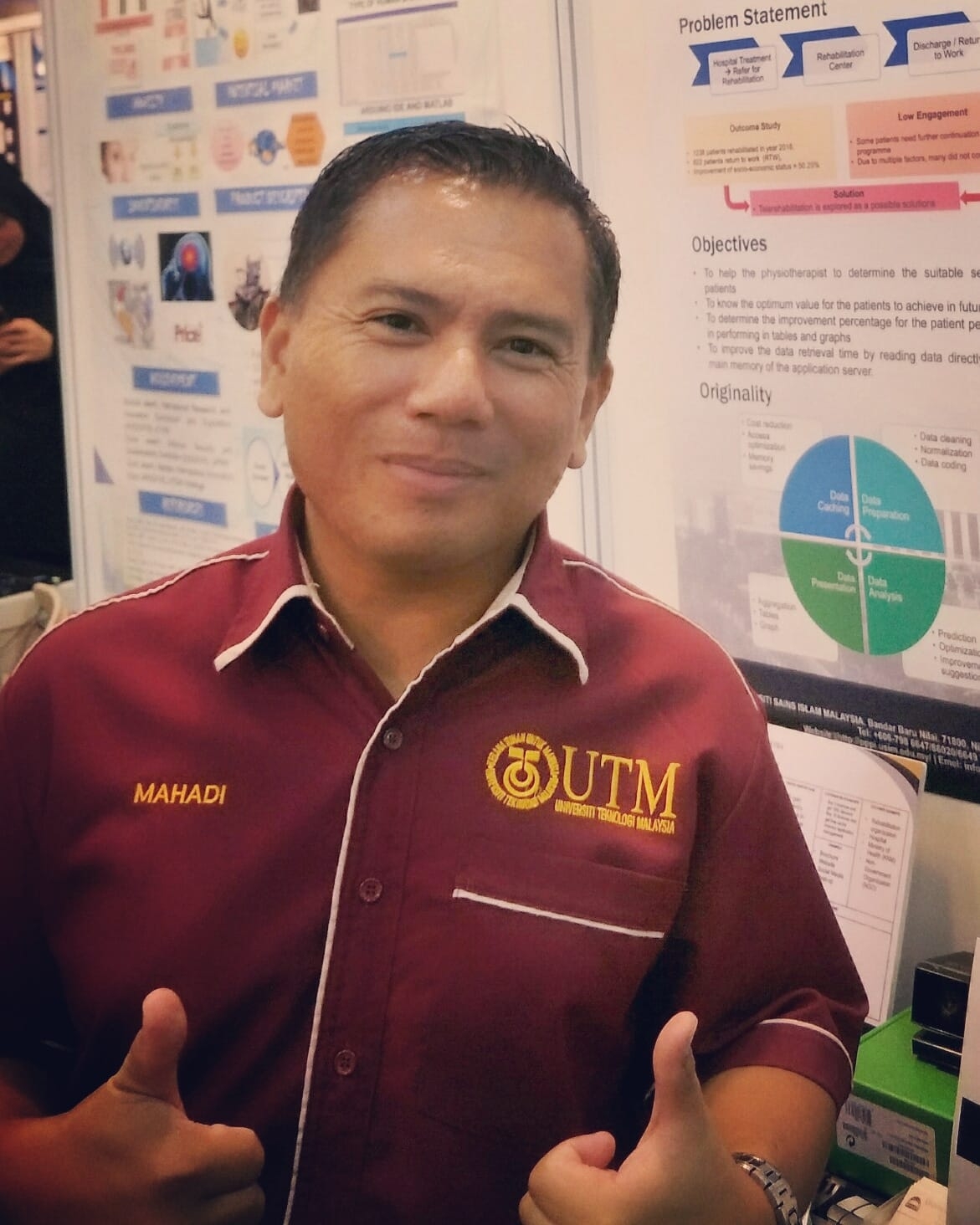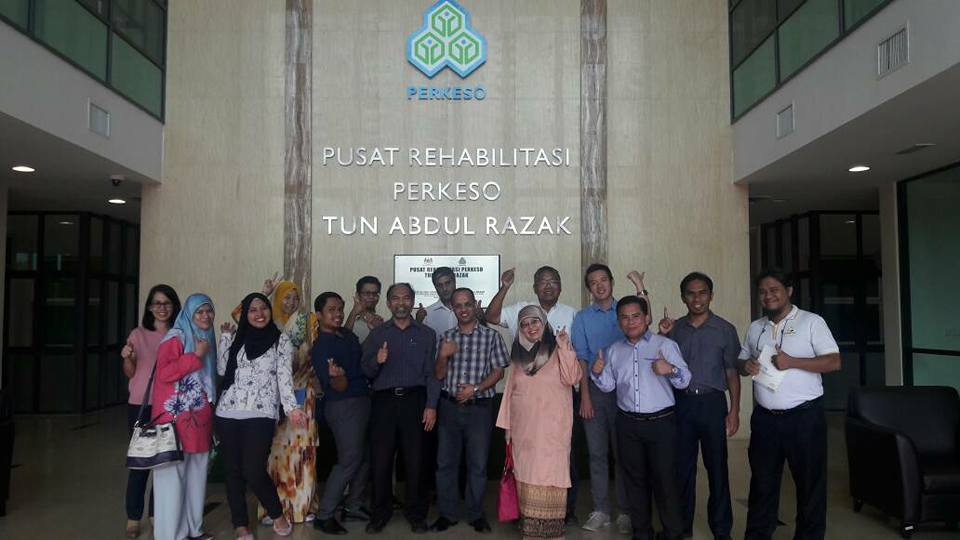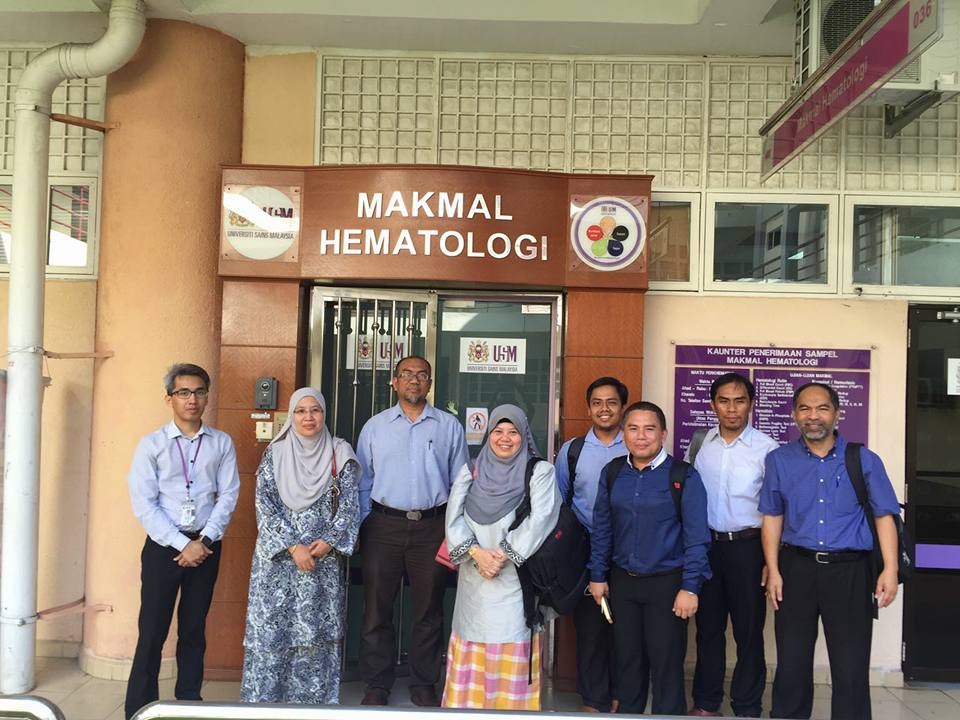Research
Research
“For everything that you’ve achieved, be grateful. It happened only with the Almighty’s will”
Principal Investigator:
| 2018 - 2019 | Segmenting eye redness pixel intensity based on fuzzy-rule-based system Internal Grant – TIER 1: RM50,000 Vot: QJ130000.2528.19H6 |
| 2016 - 2019 | IntelliRehab - Intelligent medical system with customised exercises for personalized home telerehabilitation External (Networking Grant) - Newton Ungku Omar Fund: RM1,181,334 Vot: SJ130000.7628.4X273 |
| 2016 - 2019 | Enhanced flower pollination algorithm for map object simplification External (MOSTI): RM60,200 Vot: RJ130000.7828.4F868 |
| 2016 - 2019 | Segmenting eye redness pixel intensity based on fuzzy-rule-based system External (Networking Grant) - Newton Ungku Omar Fund: RM1,181,334 Vot: SJ130000.7628.4X273 Segmenting eye redness pixel intensity based on fuzzy-rule-based system External (Networking Grant) - Newton Ungku Omar Fund: RM1,181,334 Vot: SJ130000.7628.4X273 |
Project Member:
| 2018 - 2021 | The Establishment of a Digital Economy Environment through Asset and Facilities Management Framework Transdiciplinary Research Grant: RM60,000 Vot: QJ130000.3555.07G33 |
| 2018 – 2021 | Data-Driven Innovation Enabling Academia-Industry Collaboration for a Future Ready Curriculum (DDI4FRC) High Impact Research Grant: RM93,000 Vot: QJ130000.2455.04G78 |
| 2018 – 2021 | Partial differential equation (PDE)-based geometric modelling, image processing and shape reconstruction External (Foreign Government): RM537,435 Vot: RJ130000.7328.4B344 |
| 2018 – 2021 | Intelligent selection of process parameters for optimization of high-speed machining industry High Impact Research Grant: RM30,000 Vot: QJ130000.2428.04G35 |
| 2018 – 2019 | Engagement model in understanding enterprise architecture Internal Grant -TIER 1: RM38,500 QJ130000.2528.16H76 |
| 2016 - 2017 | Profiling of foreign workers in Pengerang Institut Inovasi Strategik Johor: RM34,500 Vot: Profiling of foreign workers in Pengerang |
| 2015 – 2017 | A Framework for Embedding Gamification in Online Collaborative Learning Environment UTM R&D Fund: RM20,000 Vot: RJ130000.7713.4J161 |
| 2014 – 2016 | A new interactive learning model for young learner using persuasive behaviour model in mobile environment Internal Grant -TIER 1: RM340,000 Vot: QJ130000.2528.05H82 |
| 2017 - 2018 | Data Interconnectivity for Open Data of Natural Disaster Management in Malaysia Internal Grant – TIER 1: RM20,000 Vot: QJ130000.2628.14J45 |
| 2017 – 2019 | Pembangunan dan Pengukuran Kualiti Kesejahteraan Pelajar (Student Well-being Quality): Kajian Kes di Sekolah ABIM, Johor Internal Grant – TIER 1: RM37,800 Vot: QJ130000.2529.18H26 |
| 2018 – 2019 | Study of Aqua Automation and Smart Net for Roboxa Technologies Sdn Bhd Contract Research: RM400,000 Vot: RJ130000.7651.4C208 |
| 2013 – 2014 | Digital preservation of knowledge on handicraft creation Internal Grant – Flagship: RM35,000 Vot: QJ130000.2428.01G09 |
Best Paper Award - International Level
A review of success/failure factors influencing healthcare personnel for telerehabilitation
Bahari, M., Jafni, T.I., Miskon, S., Ismail, W. International Conference on Research and Innovation in Information Systems, ICRIIS, 2019, December-2019, 9073677Abstract
Telerehabilitation or known as TeleRehab offers better cost-effectiveness in healthcare service delivery over distance for patients with disabilities. Most of the TeleRehab studies focused on its benefits, applications, and methods in delivering services. However, there is still a limited number of studies discussing the significance of success/failure factors that influence the healthcare personnel for TeleRehab. The identification of these factors that affect TeleRehab may avert project failure. A systematic review was conducted from five digital databases including ScienceDirect, Scopus, IEEE, Springer, and PubMed. The manual type of searching also conducted. There are 1283 of total potential papers were identified. 735 papers have gone through the inclusive and exclusive criteria, and quality assessment process which leaves 12 papers for further review. The result shows that there are three success factors and nine failure factors that can be considered as important. The success factors include satisfaction and willingness, cost/financial benefits, and e-healthcare knowledge. The failure factors include resistance to change, lack of knowledge, financial limitation, lack of awareness, less use of hardware and software, lack of skill optimizing, connectivity issues, less involvement in planning, and less of training. This review provides a synthesis of the literature of success/failure factors among healthcare personnel for TeleRehab.
@ 2019 IEEE.Author keywords
Healthcare personnel; Healthcare service; Success/failure factors; Systematic literature review; TelerehabilitationSocial network sites (SNS) issues in learning landscape – Systematic literature review
Zulkanain, N.A., Miskon, S., Abdullah, S.N.S., Ali, N.M., Bahari, M., Ahmad, N. Lecture Notes in Computer Science (including subseries Lecture Notes in Artificial Intelligence and Lecture Notes in Bioinformatics), 2019, 11870 LNCS, pp. 592–600Abstract
The education platform today has evolved in align with the development of information technology. Social Network Sites (SNS) appears to be one of the many famous platforms applied in numerous fields, such as business and education. With that, this paper lists the present types of SNS employed for the education arena and the issues involved. Hence, the Systematic Literature Review (SLR) methods was performed to comb through publications that contained studies pertaining the types of SNS and their relevant issues. Based on qualitative analysis, Facebook, Twitter, YouTube and WhatsApp emerged as the present trends of SNS applied by students and instructors for their learning session. The related issues are distraction, lack of guidelines, low internet connectivity, professional boundaries, unnecessary statements and low response.
© Springer Nature Switzerland AG 2019.Author keywords
Education; Social Network Sites; Systematic Literature ReviewAbstract
Being sustainable within social, environmental, and the economy is still a major issue to almost every company globally. Although on-going actions have been implemented via information and communication technology (ICT), studies and development efforts in seeking solutions are in scarcity, particularly for the present use of software to perform its intended task. The lack of technological innovation and development motivate us to explore the present use of software with the focus on software quality criteria (SQC) in attaining sustainable development targets (SDTs). The understanding of SQC is significant for the purpose of meeting the needs and operating environment of software that are continually changed in the future. This paper presents a semi-structured interview involving eight digital library’s stakeholders in one of Malaysian higher learning institution. By applying thematic analysis, the study finds six digital library software quality criteria (DL-SQC) and seven digital library sustainable development targets (DL-SDTs) that were heavily stressed by more than half of participants. The DL-SQC are usability, maintainability, functionality, portability, efficiency, and reliability. While the DL-SDTs are equal access to information/knowledge, energy efficiency, persistent updates the information/knowledge, collaboration & partnership, funding, green technology innovation, and information/knowledge sharing. The study contributes as a guide to researchers who are motivated to position their further studies into this topic and for a practitioner; it is to summarize the SQC and their relevant SDTs that may be applied to make decisions regarding the next level of software development and maintenance process towards being sustainable.
© Springer Nature Switzerland AG 2020.Author keywords
Information service sustainable development targets; Software quality criteria; Sustainable development goals; Thematic analysisAbstract
Myoelectric control prostheses fingers are a popular developing clinical option that offers an amputee person to control their artificial fingers by recognizing the contacting muscle residual informs of electromyography (EMG) signal. Lower performance of recognition system always has been the main problem in producing the efficient prostheses finger. This is due to the inefficiency of segmentation and feature extraction in EMG recognition system. This paper aims to compare the most used overlapping segmentation scheme and time domain feature extraction method in recognition system respectively. A literature review found that a combination of Hudgins and Root Mean Square (RMS) methods is a possible way of improving feature extraction. To proof this hypothesis, an experiment was conducted by using a dataset of ten finger movements that has been pre-processed. The performance measurement considered in this study is the classification accuracy. Based on the classification accuracy results for the three common overlapping segmentation schemes, the smaller the window size with larger increment windows produce better accuracy but it will degrade the computational time. For feature extraction, the proposed Hudgins with RMS feature showed an improvement of average accuracy for ten finger movements by 0.74 and 3 per cent compared to Hudgins and RMS alone. Future study should incorporate more advance classification accuracy to improve the study.
© Springer Nature Switzerland AG 2019.Author keywords
EMG signal; Feature extraction; Finger movement classification; Segmentation scheme


